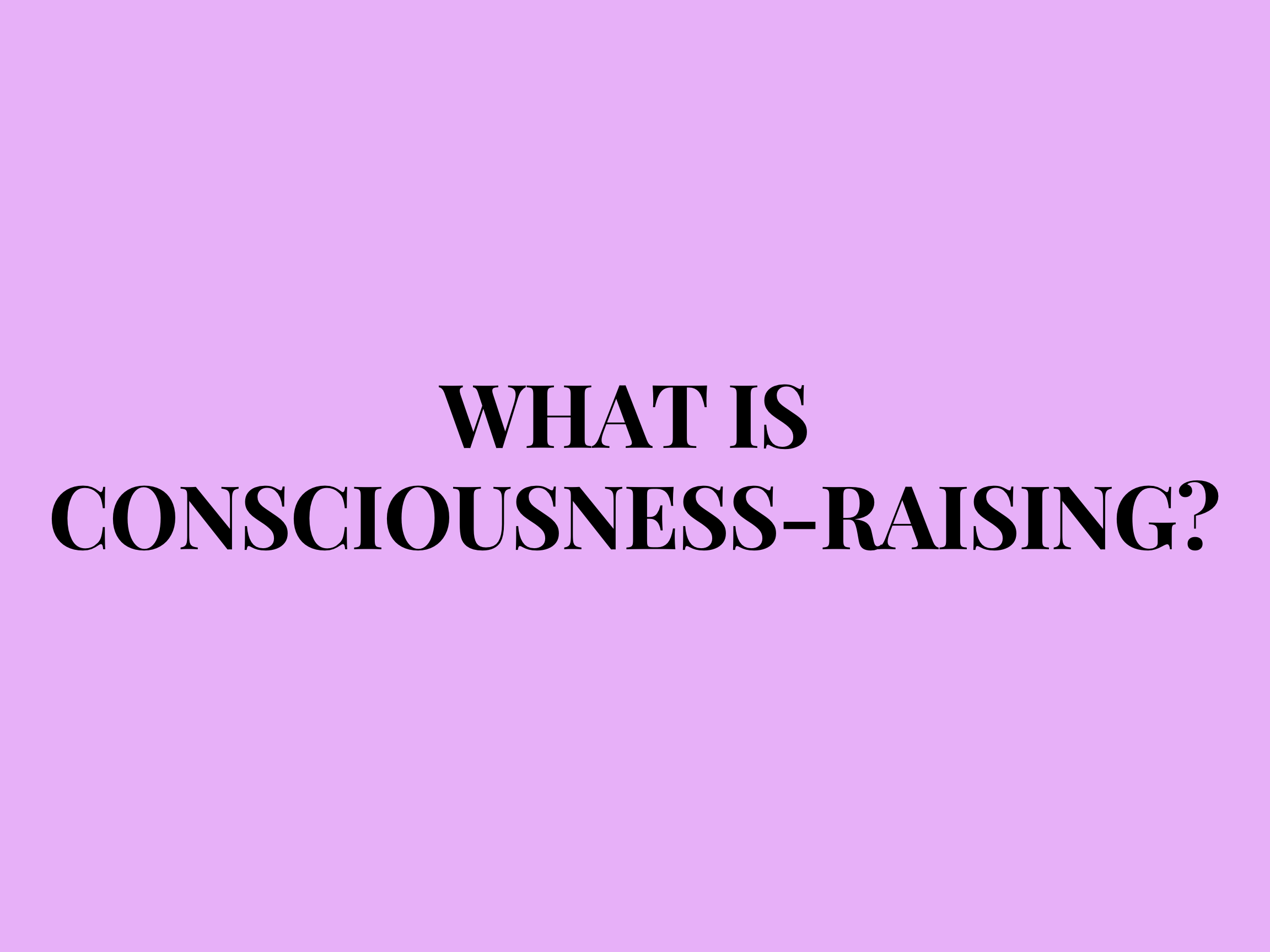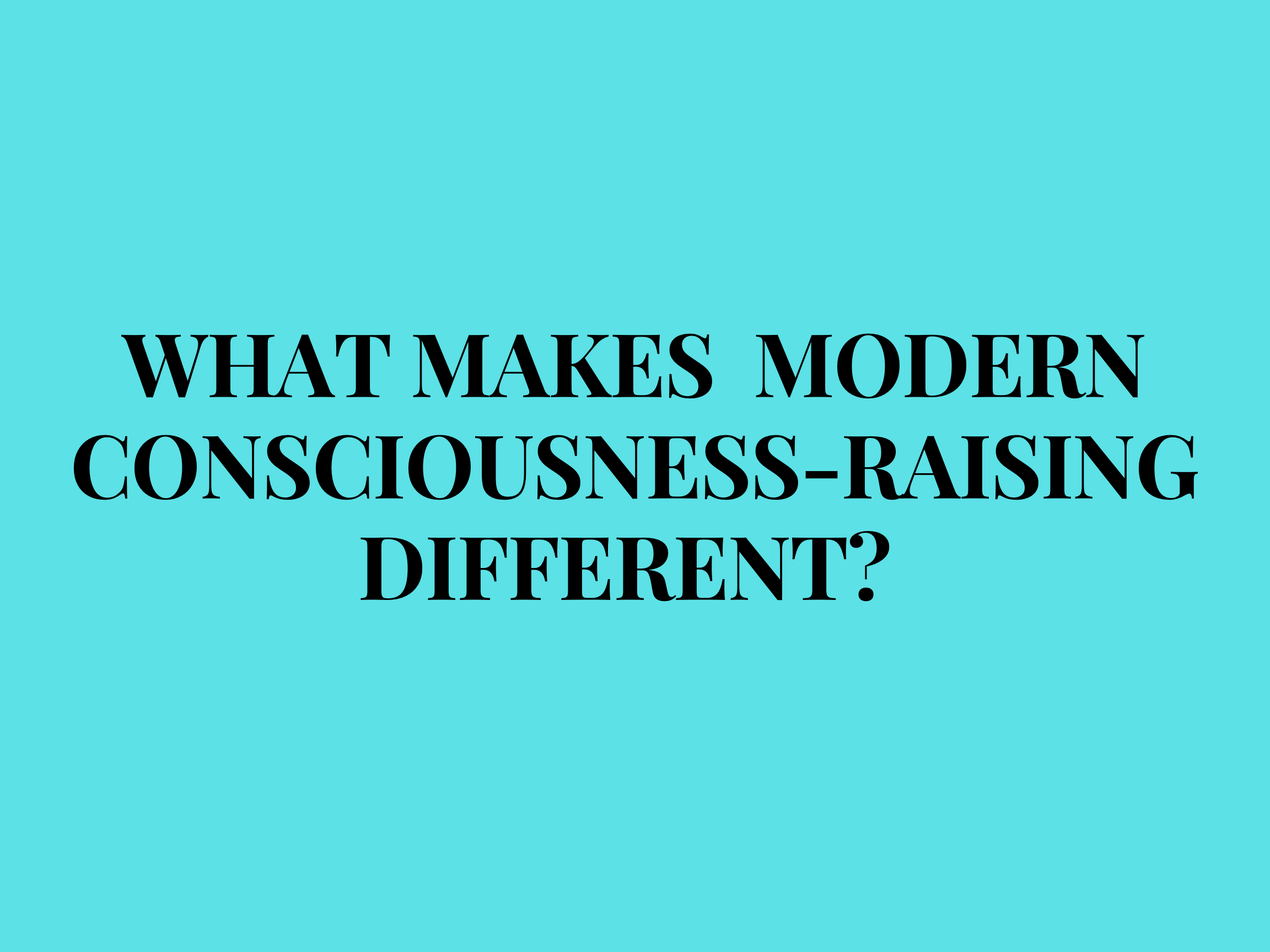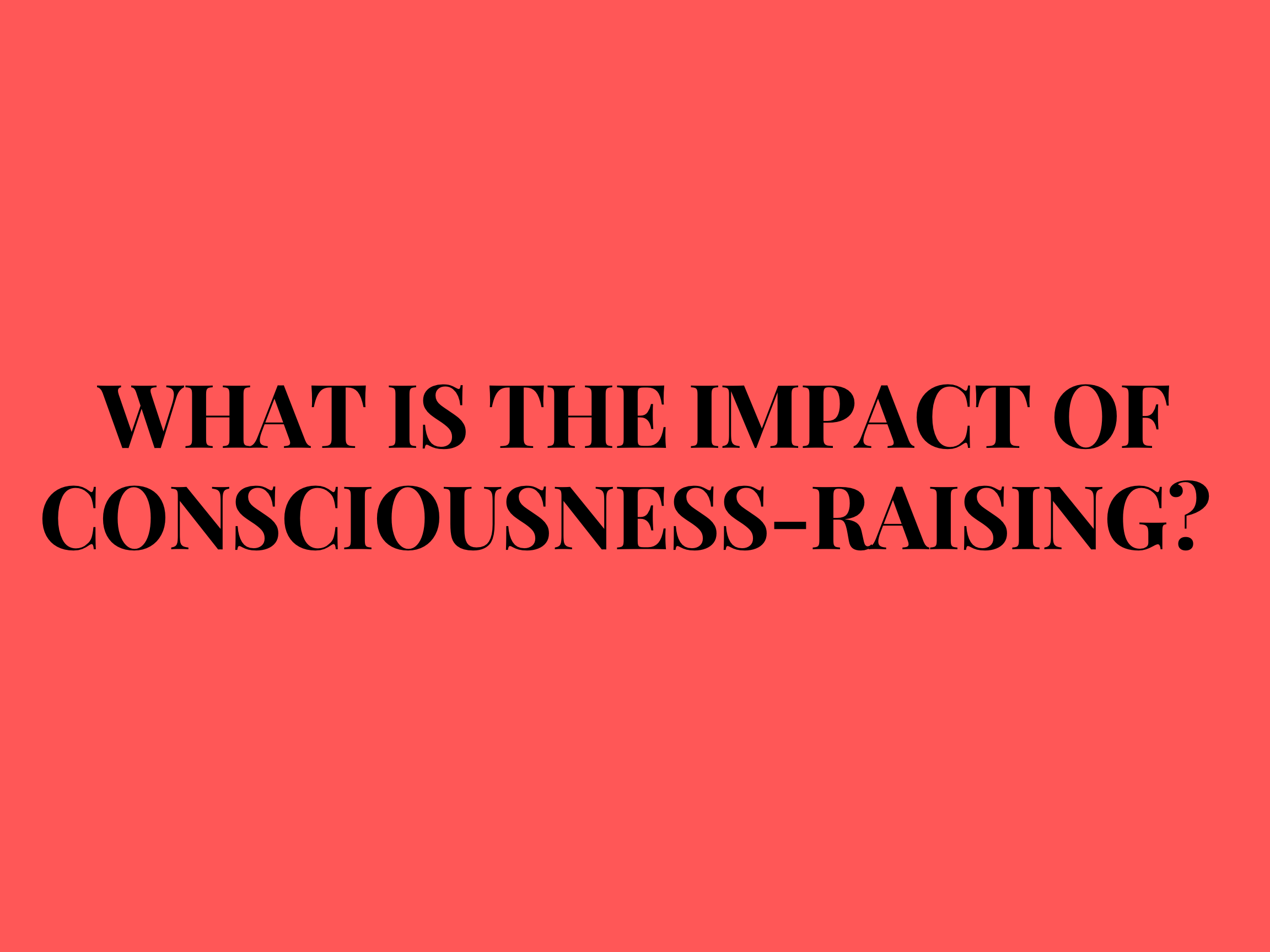Sex and Consciousness-Raising
In order to understand the significance of modern feminism, we must examine the root of the movement: consciousness-raising. In the first section of this project, we will ask:
-
What is consciousness-raising?
-
What has consciousness-raising looked like over the years?
-
What makes modern consciousness-raising different? And
-
What is the impact of consciousness-raising?

Consciousness-raising is the genesis of all social justice movements, but what exactly is it? Consciousness-raising, or CR, is the act of radicalizing yourself and others’ minds by exposing each other to the injustices of society. Pam Allen-of the San Francisco consciousness-raising group Sudsofloppen- marked four factors of consciousness-raising:
opening up,
sharing,
analyzing,
and abstracting [1].
The formal beginning of consciousness-raising is typically said to begin in 1968 but has been exercised for years. The more institutionalized process of “speaking bitterness” (as many Chinese Revolutionaries called it) rose in popularity when the “second wave” of feminism was met with other social justice movements. CR groups began as a wave for feminists to have a safe space to air their grievances and be validated. They were allowed to be vulnerable, and explore their feminism without fear of social judgment or ridicule [2].

Consciousness-raising happens in a private setting. This could be a house, office building after hours, a church and anywhere in between. Groups often stayed small. Some held as little as 3 or 4 and some grew to the 20s. But the smaller the groups, the more opportunity each person had to share. They often started with open-ended questions, that could then escalate into deeper questions. These are some questions that were prompted in the 1970s.
Are you a “nice” girl?
Have you ever faked an orgasm?
Do you feel guilty if your house is dirty or messy?
Do you worry about being truly feminine?
How do you think men see me?
Do you feel competitive with other women?
These questions allow each person to open up as much as they would like, to share their own experience, analyze how their and others experience compare, and abstract these stories into the overall conversation about feminism consciousness-raising efforts in the feminist movement primarily targeted middle-class, white women in hopes of them realizing their oppression.

As seen in the previous section, we saw images of consciousness-raising efforts from the 1970s and now. It is not hard to see that while the intention of CR has remained, the execution has drastically evolved. So what are the distinctions? There are three key changes: the venue, the audience, and the topic.
The Venue [3]
The change in venue allows for more individualization of CR groups and expands the opportunity of your impact.
Historically, CR has happened in person, with small groups from your own community regularly meeting at a designated location. That is no longer the case. Social media has allowed for CR pockets to pop up all around the internet. They can be as temporary or as permanent as they want, be as small or as large, and discuss as broad or as specific of a topic. Consciousness-raising can now be a blog, Facebook group, or hashtag chain. This past month, twitter expanded "Spaces," a function where you can hold live-streams and conversations about a certain topic for people to open up, share, analyze, and abstract. It is quite literally the virtual version of CR.
Social media also allows for the impact of CR efforts to be delayed. In person, you have the effect on the people in front of you, but blog and feed posts can last forever. People years from now can discover a conversation surrounding sex and recieve the same impact as if that conversation was happening right in that moment.
The Audience [4]
The internet created an “earth-wide network of connections[3].” And as networks grew, so did the ability to produce CR events on increased scales. While consciousness-raising began as an in person event, it now has the potential to touch people around the globe. We are seeing blogs and private messaging groups replicate CR on a massive scale. Trending hashtags like #metoo can people to see peoples stories with the swipe of their finger. The hashtag #solidarityisforwhite women was used 75,465 times in just 4 days. Feministing.com was the most prominent blog on feminism in the early 2010s. They amassed over 600,000 views per month [5].
Having a large audience can be a positive and negative thing. But it allows for faster momentum in social justice movements. Outside of the feminist movement, March For Our Lives amassed over 1 million protestors in one month just by using social media. An estimated 5 million people joined the Women's March which started the day after the election on Facebook.
The shift towards virtual consciousness-raising allows for larger audiences to be impacted by CR efforts.
The Topic
Most importantly, the topics that are being discussed have evolved, especially the way we talk about sex. Sex and the power surrounding sex has always been a taboo topic, but the internet allows empowerment, not just through anonymity, but support from thousands of feminists around the world. When people see others supporting their stories, they are more likely to be open about topics that were previously hushed. It allows for vulnerable conversations to be had, and to reach authors and audiences that you may not have access to. I know for me, as a teenager raised on Twitter, Tumblr, and Instagram, the first conversations I had surrounding sex were online. Especially for those in communities who still shush at the mention of the “s-word,” social media can be the only place people are educated and become familiar with sex.
Studies like Teagan Zimmerman's "#Intersectionality" tell us that sex is a primary topic amongst consciousness-raising inititatives on social media, but we can see it for ourselves. #MeToo, The Womens March, "Who Needs Feminism" initiative, TERFs, and slut walks have all surrounded sex [6].
Whether it is sexual identity, empowerment, or abuse, sex has permeated every part of feminist culture today. And we believe that this is a good thing.

Consciousness-raising has undergone two major changes since its inception in 1968. It has been transformed to fit our virtual communities and its topics have expanded to fit the questions and demands of our society.
As you further into our presentation, think about how this new, evolved consciousness raising has played a part in each of these topics.
Notes
[1] Cobble, Dorothy Sue, Gordon, Linda, Henry, Astrid. “Feminism Unfinished.” Liveright; Reprint edition: (July 27, 2015) https://doi.org/10.1111/j.2050-5876.2014.00812.x
[2] Siedman, Rachel Filene, “Speaking of Feminism Today’s Activists on the Past, Present, and Future of the U.S. Women’s Movement.” North Carolina Scholarship Online: (2019): DOI:10.5149/northcarolina/9781469653082.001.0001
[3] Flores, Pamela, Nancy Regina Gómez, Alana Farrah Roa, and Risa Whitson. “Reviving Feminism through Social Media: From the Classroom to Online and Offline Public Spaces.” Gender and Education 32, no. 6: (August 17, 2020): 751–66. https://doi.org/10.1080/09540253.2018.1513454.
[4] Zimmerman, Tegan. “#Intersectionality: The Fourth Wave Feminist Twitter Community.” Atlantis: Critical Studies in Gender, Culture & Social Justice 38, no. 1 (June 9, 2017): 54-70 PDF.
[5] Soloman, Deborah “The Blogger and Author on the Life of Women” The New York Times. (November, 2009): https://www.nytimes.com/2009/11/15/magazine/15fob-q4-t.html.
[6] Bates, Laura. “Everyday Sexism,” TEDxCoventGardenWomen video. December 2013.


